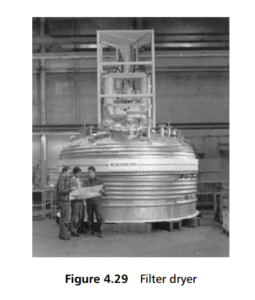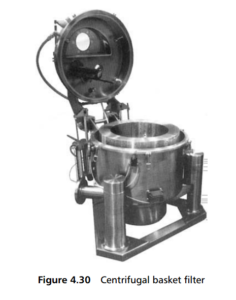0
-
An empty cart
You have no item in your shopping cart
envato-wordpress-toolkit domain was triggered too early. This is usually an indicator for some code in the plugin or theme running too early. Translations should be loaded at the init action or later. Please see Debugging in WordPress for more information. (This message was added in version 6.7.0.) in /var/www/wp-includes/functions.php on line 6121g5plus-darna domain was triggered too early. This is usually an indicator for some code in the plugin or theme running too early. Translations should be loaded at the init action or later. Please see Debugging in WordPress for more information. (This message was added in version 6.7.0.) in /var/www/wp-includes/functions.php on line 6121Filtration is normally called for prior to filling toiletry and cosmetic containers. Sheet filters are normally employed for this purpose. In this sector are commonly found applications for medium or fine clarification, involving eau-de-Cologne lotions, aftershave preparations, toilet waters, etc. (some of which are spirit based and some water based). Ultrafiltration is used, in the manufacture of natural cosmetic products, for the clarification of concentrates for fruit and salad based products that are included in cleansers, moisturizers, bath products and face creams.
Advances in chemical and pharmaceutical technology allow for processing of products in one sealed unit where previously transfer between different pieces of equipment was required. The general processing steps available in such a unit are
as follows:
1. filtration of slurry, aided by pressurizing the vessel and/or applying a vacuum on the underside of the filter medium
2. washing of the cake using a spraying system
3. resuspended filtering and washing the cake
4. smoothing and drying the cake using hot gas purging and the application of aheating jacket and jacketed filter plate
5. drying the cake under vacuum with the agitator raking up the cake, and
6. the ability to remove the cake through a solids discharge door in the vessel side or at its top.
Such vacuum filter dryers are used for processing pharmaceuticals, fine chemicals and toxic products, and can use a variety of filter media including sintered metal plates, woven wire mesh and a wide range of fabric cloths. Most processing steps can
be carried out either under vacuum, or an inert gas such as nitrogen, or under normal atmospheric conditions. Dissolved solids can then be crystallized by application of cooling in the jacket.
During the filter/wash cycle the unit is held with the filter plate lowermost. Vacuum is maintained below the plate and mother liquor drawn off to a separate receiver. A smoothing agitator is used to level the cake and prevent cracking in it so as to maintain the vacuum. When the initial filtration is completed, the cake can be washed by introduction of fresh water or solvent. The filter cake is dried by rotating the unit about half a turn to bring the reactor section lowermost and slightly inclined from the vertical. On completion of drying the product is discharged through the loading port, or by some other means. The filter dryer can actually be quite a large piece of plant as is shown in Figure 4.29.

Disc stack, decanter and tubular bowl centrifuges are used for a wide range of separation duties in the pharmaceutical and fermentation industries, including liquidsolid, liquid-liquid, liquid-liquid-solid separations, and liquid-solid extraction. Typical process steps include cell harvesting, concentration and washing, cell debris removal, inclusion body recovery and purification, solvent extraction, dewatering and recovery.
Disc centrifuges differ in the amount of solids they can handle for a given feed and in the way the solids are removed from the separating vessel. Solids-ejecting types are more suitable when the solids concentration in the feed fluctuates. They remove the solids intermittently while the machine is at full speed, or continuously through nozzles at the periphery of the bowl. Solids retaining centrifuges are generally intended for separating liquids that contain only a small amount of solids; the
solids accumulate inside the bowl of the separator, which needs to be stopped at intervals for the accumulated solids to be manually removed.
Decanter centrifuges, for process applications, are typically solid bowl scrolldischarge machines, capable of continuous solid and centrate discharge. They are ideally suited to handling high feed solids concentrations and delivering dry solid products. They are generally able to convey the soft solids often encountered in the pharmaceutical and fermentation industries.
Tubular bowl centrifuges usually incorporate continuous centrate discharge and batch solids recovery, and operate at variable speeds up to 20,000 G. Although primarily intended for liquid-liquid separation, they can also be used for recovery or classification of ultra-fine solids. These sedimenting centrifuges (disc, decanter and tubular bowl) are described further in Section 7.
Centrifugal filters are also used quite widely in the fine chemicals and pharmaceuticals sector. They can either be of the perforated basket type (as shown in Figure 4.30 ), with manual, bag or knife unloading of filter cake, or the peeler, operating with a horizontal axis and with cake removal by a peeling knife into a discharge chute.
